The museum’s numismatic exhibition is divided into two comprehensive themes: The History of Currency Circulation in Romania and The History of the Romanian Leu. The exhibition recreates Romanian history from the perspective of currency circulation.
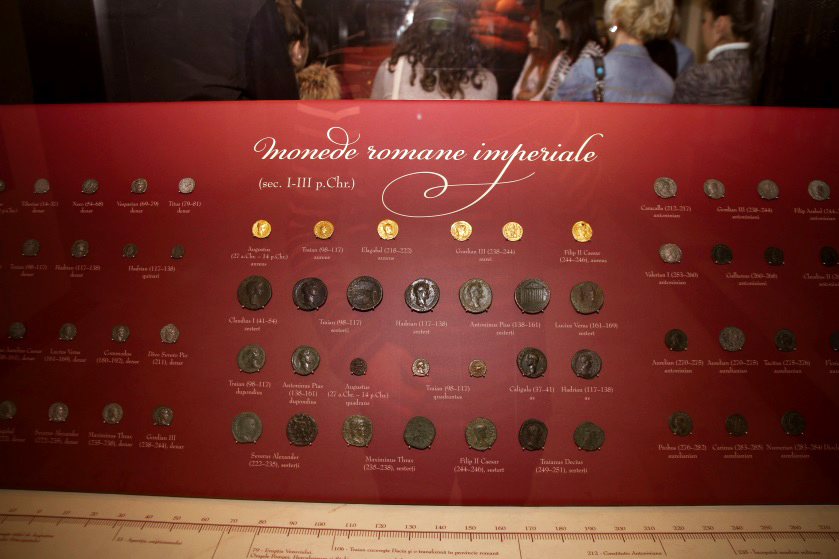
Showcase from the exhibition
The spaces used ensure a relative autonomy of the two sections and allow several museum circuits, deriving from the building’s architecture and from the exhibition themes.
The History of Currency Circulation in Romania is chronologically displayed in ten showcases, with double exhibition panels. These are located in the two lateral aisles of the Marble Hall and bring together a large range of money types that are relevant for Romanian and universal history, spanning from Antiquity to the 19th century.
The vaults that are embedded in the room’s pillars are a surprise for the visitors and unique among other museums in the country. They are used as showcases, which confers more originality and value to the museum layout and contributes to marking certain moments in Romanian banking history.
The exhibition begins with the presentation of coins issued in Histria, a city on the Western shore of the Black Sea, which had started striking silver didrachms in 480 BC. These were the first coins ever to be minted on the territory of present-day Romania.
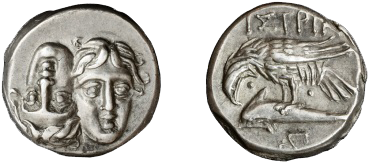
Histrian didrachm
The exhibition also includes fractional coins (obols, hemiobols, trihemiobols), as well as interesting exhibits showcasing coinage from Callatis and Tomis, the other two Greek cities on the Dobruja seacoast.
Among the exhibited Greek coins are issues by the cities of Thassos, Dyrrhachium, and Apollonia. Macedonian coins started circulating in the Lower Danube area, with the increase of the Macedonian kings’ political influence. The displayed coins are mainly gold staters, silver tetradrachms and bronze coins struck by Philip II and Alexander the Great.
Roman coins, and mainly the silver denarius, started circulating in the north of the Danube in the 2nd and 1st centuries BC, with the increase of Roman influence in the Balkan region. They gradually replaced Greek-Macedonian coins and, after the conquest of Dacia, the history of the regions north of the Danube overlapped with the history of Roman coinage. The dissemination of Roman currencies over these territories continued after the withdrawal of the Roman administration from Dacia (c. 275 AD). The exhibition includes mainly coins issued by emperors that had had important interventions in the destiny of this province. Visitors will be presented coins issued for the province of Dacia by Philip the Arab, as well as various coinage issued by Trajan, Hadrian, Antonius Pius or Septimius Severus. From a typological point of view, valuable gold and bronze coins (aurei, sestertii, dupondii, akces and quadrants) are exhibited alongside the more numerous silver coins.
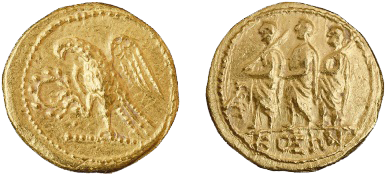
Dacian koson type stater
Of all Dacian coins, the koson type stater is by far the best known. The exhibition at the Museum of the NBR also features versions of silver kosons.
Byzantine coins started circulating with Anastasius’s monetary reform of 498, aiming at granting a stable value to the bronze folles. These were widely circulated on Romanian territory until the 15th century.
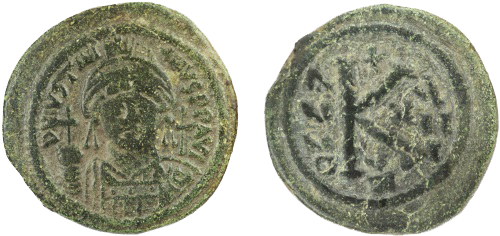
Half-follis Justinian I
The second part of The History of Currency Circulation in Romania is dedicated to medieval and modern coins, from the 14th to the 19th century, with each important stage marked by relevant exhibits.
The first Wallachian coins were the ducats and the bani of Vladislav I Vlaicu (1364-1377).
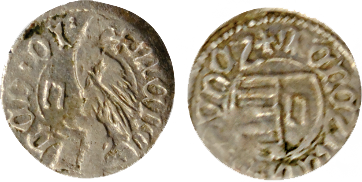
Wallachian ducat, Mircea the Elder
The Wallachian mint was at its height during Mircea the Old and almost stopped operating altogether in the 15th century, due to the increase of the political and economic power of the Ottoman Empire in the region. After that, there had been feeble attempts to issue currency by Mihnea III (1658) and Constantin Brâncoveanu, who ordered the minting of gold coin-medals for celebrating his 25 years of reign.
The Moldavian monetary system has been established during the reign of Petru I Mușat and was made up of silver groats, half-groats and later on double groats. The Moldavian mint kept operating for a longer while. One of the valuable pieces in this showcase is the akces of Ioan Vodă the Terrible (1572-1574), a large bronze coin, considered to be the first issue with a Romanian inscription.
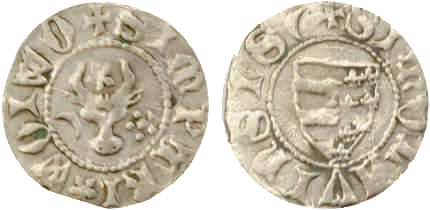
Moldavian groat, Petru I Muşat
Money circulation in Transylvania has reflected the evolution of the status of the province over time: it used to be part of the Hungarian Kingdom, an autonomous principality under Ottoman and, later, Hapsburg suzerainty. Therefore, while under Turkish control, Transylvanian princes used to mint coins in their own name, mainly high value coins: gold ducats and multiples, silver talers, or double talers. After becoming subject to Hapsburg rule, Transylvanian mints started issuing coins in conformity to the Austrian or Hungarian systems.
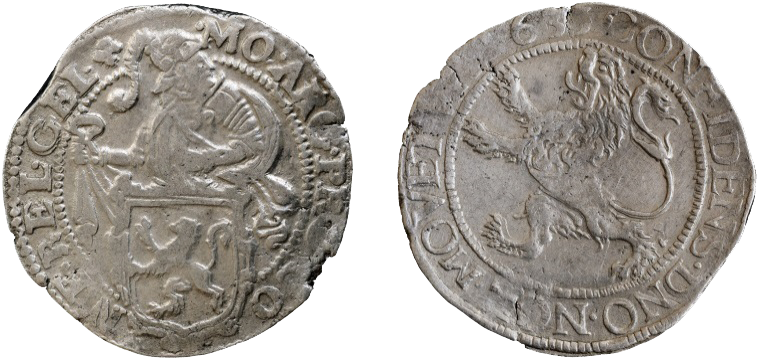
Lion-thaler, Netherlands, 1633
Alongside their own currency, or rather in the absence thereof, Wallachia and Moldova were massively saturated by coins issued by other states. Starting with the 15th century the Ottoman aspers, the Venetian zecchino and the Hungarian florin became much circulated. Over the last two decades of the 16th century, the monetary economy of Wallachia was dominated by various silver coins, out of which the lion-thalers (Loewendaalder), issued in the Netherlands, became the most popular. At the end of the 17th century, the circulation of these thalers decreased considerably, while the Romanian provinces opened up to a variety of coins minted all over Europe and the Ottoman Empire.